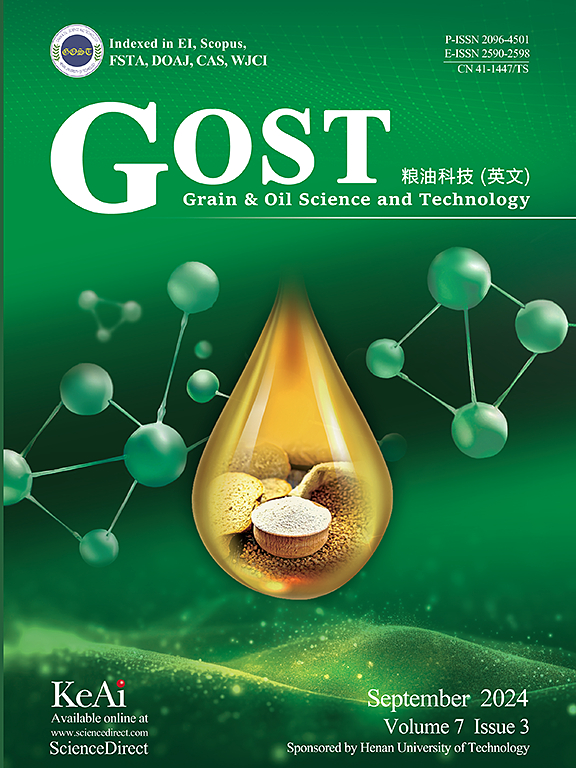Thermal and textural properties of extruded rice affect its cooking performances and the texture of the steamed extruded rice
Q2 Agricultural and Biological Sciences
引用次数: 0
Abstract
Extruded rice has increasingly gained popularity in the market due to its convenience and acceptable texture. The objective of this study was to understand how the physicochemical, thermal, and textural properties of the extruded rice affected its cooking properties and texture of the cooked one. It was found that air trapped in the grains during extrusion reduced the transparency of extruded rice. More air trapped in the grains reduced the true density of the extruded rice, which in turn decreased the hardness of extruded rice. A looser internal structure of extruded rice grain, as indicated by the lower true density, resulted in a faster hydration and shorter optimum cooking time. Extruded rices showed two thermal-transition peaks, with peak 1 from 93.3 °C to 112.8 °C and peak 2 from 107.5 °C to 132.5 °C. The increased hardness of extruded rice led to increases in its thermal-transition temperatures, longer optimum steaming time, and decreases in its water absorption and cooking loss, which resulted in an increase in the hardness and a reduction in the adhesiveness of the steamed one. This study provides insights into the key factors determining the eating quality of extruded rice, which is beneficial for food scientists in developing premium extruded rice.

挤出米的热特性和结构特性影响着挤出米的蒸煮性能和蒸煮后挤出米的结构
挤压米因其方便和可接受的质地在市场上越来越受欢迎。本研究的目的是了解膨化大米的理化、热、质构特性如何影响其蒸煮特性和煮熟大米的质构。结果表明,挤压过程中颗粒中的空气会降低挤压大米的透明度。更多的空气被困在颗粒中,降低了挤出大米的真实密度,这反过来又降低了挤出大米的硬度。挤压后的米粒内部结构较松散,其真实密度较低,导致水化速度更快,最佳蒸煮时间更短。挤压后的大米有两个热转变峰,峰1在93.3℃~ 112.8℃,峰2在107.5℃~ 132.5℃。膨化大米的硬度增加,导致其热转变温度升高,最佳蒸煮时间延长,吸水率和蒸煮损失量降低,从而导致蒸煮大米的硬度增加,附着力降低。本研究揭示了决定膨化米食用品质的关键因素,有助于食品科学家开发优质膨化米。
本文章由计算机程序翻译,如有差异,请以英文原文为准。
求助全文
约1分钟内获得全文
求助全文
来源期刊

Grain Oil Science and Technology
Food Science
CiteScore
7.30
自引率
0.00%
发文量
69
审稿时长
12 weeks
期刊介绍:
 求助内容:
求助内容: 应助结果提醒方式:
应助结果提醒方式:


